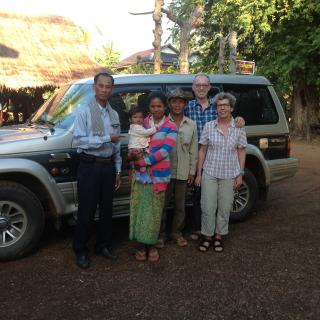


.jpg)









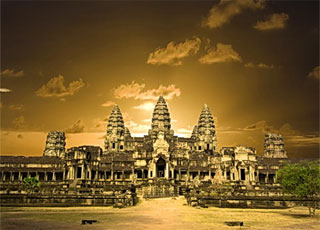 Siem Reap province is located in the Northwest of Cambodia. It is the major cultural tourism attraction in Cambodia, as it is the gateway to the world famous temple of Angkor and also the base for exploring the fabulous ancient capital of Khmer Empire. It is located 314 kilometers North-west of Phnom Penh, Cambodia and 15 kilometers north of Tonle Sap Lake, the greatest fresh water lake in Southeast Asia. It comprises 10 299 square kilometers and is bordered between two provinces, Kompong Thom at the east and Banteay Meanchey at the west. The name of the city literally means Siamese defeated, referring to the victory of the Khmer Empire over the army of the Thai kingdom in the 17th century.
Siem Reap province is located in the Northwest of Cambodia. It is the major cultural tourism attraction in Cambodia, as it is the gateway to the world famous temple of Angkor and also the base for exploring the fabulous ancient capital of Khmer Empire. It is located 314 kilometers North-west of Phnom Penh, Cambodia and 15 kilometers north of Tonle Sap Lake, the greatest fresh water lake in Southeast Asia. It comprises 10 299 square kilometers and is bordered between two provinces, Kompong Thom at the east and Banteay Meanchey at the west. The name of the city literally means Siamese defeated, referring to the victory of the Khmer Empire over the army of the Thai kingdom in the 17th century.
It is a small French Colonial-style town which situated picturesquely along the polluted Siem Reap River. Traces of French remnants have survived in a small quarter of colonial buildings around the Old Market to-day. It is the town where you will stay during your visit to Angkor Complex. Nowadays, Siem Reap offers a wide range of hotels including several elegant 5-star hotels, dozens of mid-range places and plenty of budget guesthouses - an amazing variety of restaurants, lots of shopping opportunities, and a vibrant nightlife.
At the turn of the millennium, Siem Reap was a town with few facilities, minor surfaced roads and little in the way of nightlife. Tourism industry catered largely to hardy backpackers willing to brave the tortuous road from the Thai border on the tailgate of a local pick-up truck. There were a couple of large hotels and a handful of budget guesthouses. Tuk-Tuks and taxis were non-existent and the trusty motor-bike cab was the chosen means of touring the temples of Angkor. The proximity of the Angkorian ruins turned Siem Reap into a boomtown in less than half a decade. Huge, expensive hotels have sprung up everywhere and BUDGET HOTELS have mushroomed. Property values have soared to European levels and tourism has become a vast, lucrative industry. The Siem Reap of today is barely recognizable from the Siem Reap of the year 2000.
Though some of the town's previous ramshackle charm may have been lost the developments of the last few years have brought livelihoods, if not significant wealth, to a good number of its citizens. This has been at a cost to the underprivileged people living within and beyond the town's limits that now pay inflated prices at the central markets and continue to survive on poorly paid subsistence farming and fishing. If Cambodia is a country of contrasts Siem Reap is the embodiment of those contrasts. Despite the massive shift in its economic fortunes, it remains a safe, friendly and pleasant town. There is an endless choice of places to stay or dine and a host of possible activities awaiting the visitor.
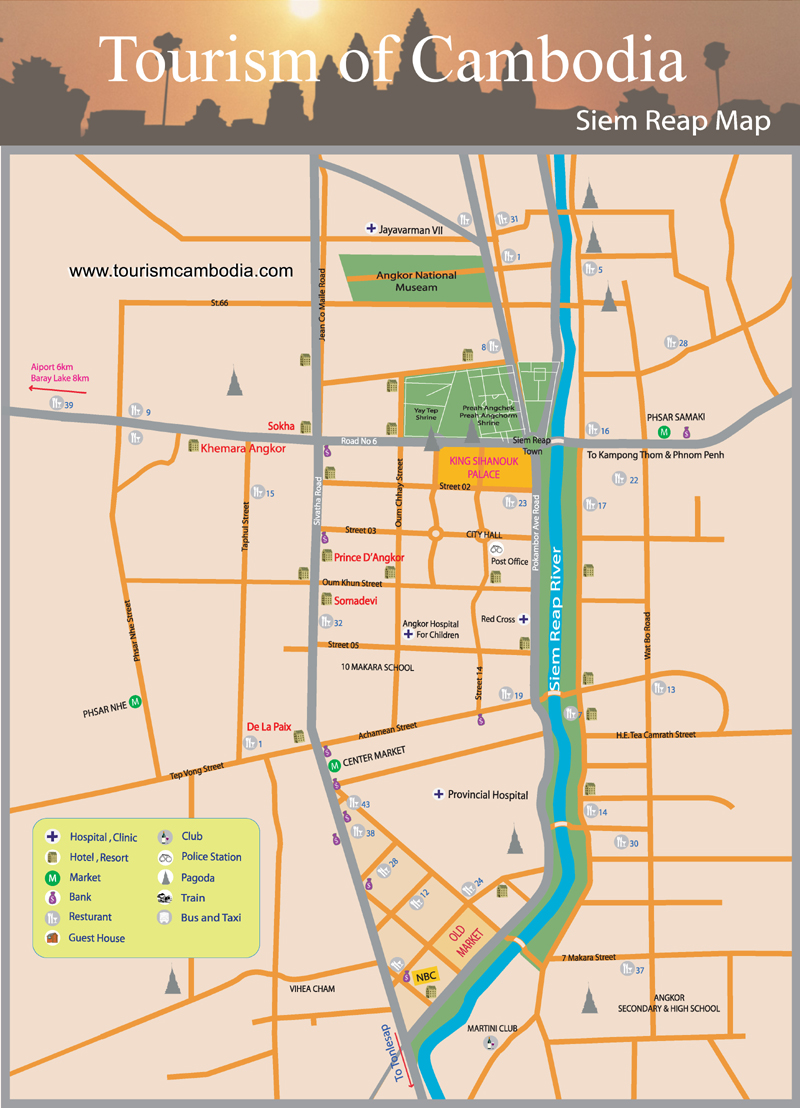 Siem Reap province is 10,299 square kilometres big and definitely one of the most famous ones in Cambodia. It's located in the Northwest of the country bordering to the North with Oddor Meanchey, to the East with Preah Vihear and Kampong Thom, to the West with Banteay Meanchey and to the South with the biggest sweet water reserve in Southeast Asia, the huge Tonle Sap Lake.
Siem Reap province is 10,299 square kilometres big and definitely one of the most famous ones in Cambodia. It's located in the Northwest of the country bordering to the North with Oddor Meanchey, to the East with Preah Vihear and Kampong Thom, to the West with Banteay Meanchey and to the South with the biggest sweet water reserve in Southeast Asia, the huge Tonle Sap Lake.
The province in general, especially in the Southern part consists of the typical plain wet area for Cambodia, covering lots of rice fields and other agricultural plantations. The northern part is turning into an undulating area covered with some deeper, green forests. A quite distinguished mark of Siem Reap Province is the smaller, but important Siem Reap River. It rises from Phnom Kulen, meanders through the northern part of Siem Reap Province and eventually into the Tonle Sap Lake.
The country has a tropical climate - warm and humid. In the monsoon season, abundant rain allows for the cultivation of a wide variety of crops. This year-round tropical climate makes Cambodia ideal for developing tourism. Travellers need not to fear natural disasters such as erupting volcanoes or earthquakes, and the country is not directly affected by tropical storms.
Climate: Cambodia can be visited throughout the year. However, those plans to travel extensively by road should be avoided the last two months of the rainy season when some countryside roads may be impassable. The average temperature is about 27 degrees Celsius; the minimum temperature is about 16 degrees. December and January are the coolest months, whereas the hottest is April.
General information about the provincial climate:
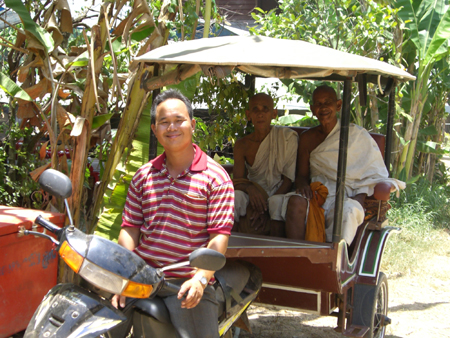 Siem Reap province is located in the Northwest of Cambodia. It is the major cultural tourism attraction in Cambodia, as it is the gateway to the world famous temple of Angkor and also the base for exploring the fabulous ancient capital of Khmer Empire. It is located 314 kilometers North-west of Phnom Penh, Cambodia and 15 kilometers north of Tonle Sap Lake, the greatest fresh water lake in Southeast Asia. It comprises 10 299 square kilometers and is bordered between two provinces, Kompong Thom at the east and Banteay Meanchey at the west. The name of the city literally means Siamese defeated, referring to the victory of the Khmer Empire over the army of the Thai kingdom in the 17th century.
Siem Reap province is located in the Northwest of Cambodia. It is the major cultural tourism attraction in Cambodia, as it is the gateway to the world famous temple of Angkor and also the base for exploring the fabulous ancient capital of Khmer Empire. It is located 314 kilometers North-west of Phnom Penh, Cambodia and 15 kilometers north of Tonle Sap Lake, the greatest fresh water lake in Southeast Asia. It comprises 10 299 square kilometers and is bordered between two provinces, Kompong Thom at the east and Banteay Meanchey at the west. The name of the city literally means Siamese defeated, referring to the victory of the Khmer Empire over the army of the Thai kingdom in the 17th century.
The current population in this province is about 903,030 people or 6.3% of the country's total population (14,363,519 person in Cambodia, 2007, provincial government data), with 440,395 male and 462,635 female. The population density is therefore 87,7 people per square kilometre.
 Generally spoken Siem Reap Province is all in all economically focusing on the foreign tourism due to the famous Angkor Temples. Since of the year 2000 the economical growth rate is gaining double-digits. It's all sub-sectors such as hotels, restaurants, bars, entertainment places and transportation to profit from the annual influx of tourists, which was in 2007 more than 1,000,000 people.
Generally spoken Siem Reap Province is all in all economically focusing on the foreign tourism due to the famous Angkor Temples. Since of the year 2000 the economical growth rate is gaining double-digits. It's all sub-sectors such as hotels, restaurants, bars, entertainment places and transportation to profit from the annual influx of tourists, which was in 2007 more than 1,000,000 people.
Except the tourism sector the provincial economy was and still is growing due to the enforced fishery. Thousands of tons are annually exported to other provinces within the country or outside Cambodia. Farming and fruit cropping has probably become a minor profitable sector, but is still done by the vast poor rural population, who are the underdogs regarding the annual provincial revenue.
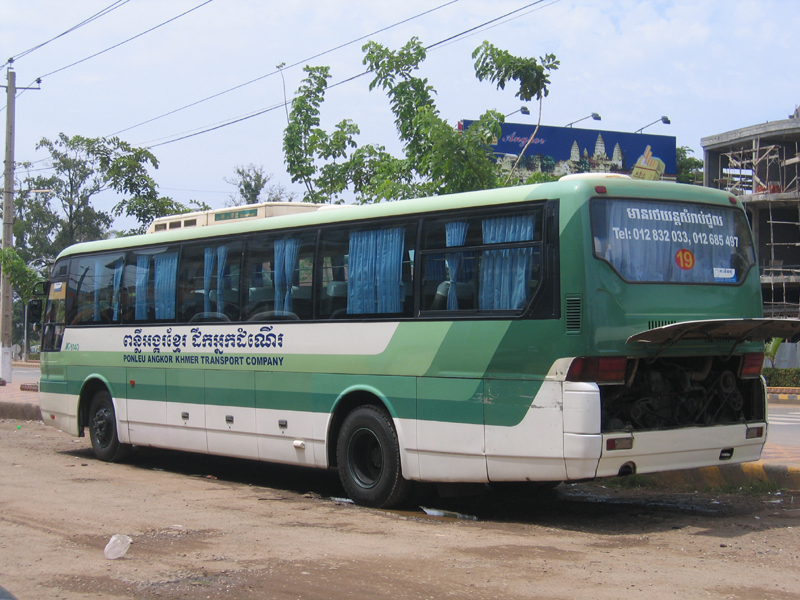 The majority of visitors to Siem Reap arrive by air from Phnom Penh and Bangkok. There are also regular flights from Singapore, Ho Chi Minh City and Vientiane. See the airline list below. Visas are available on arrival at the Siem Reap and Phnom Penh airports. From Phnom Penh, there are also daily boats and buses going to Siem Reap. Some visitors make their way to Siem Reap overland from Thailand via the Aranyaprathet/Poipet border crossing.
The majority of visitors to Siem Reap arrive by air from Phnom Penh and Bangkok. There are also regular flights from Singapore, Ho Chi Minh City and Vientiane. See the airline list below. Visas are available on arrival at the Siem Reap and Phnom Penh airports. From Phnom Penh, there are also daily boats and buses going to Siem Reap. Some visitors make their way to Siem Reap overland from Thailand via the Aranyaprathet/Poipet border crossing.
Airport Departure and Arrival Tax: Domestic: US$6. International: US$25 Siem Reap Airport: The airport sits 6km from town, close to the temples, occasionally affording spectacular views of Angkor Wat during landings and take offs. Outside the terminal is a ticket booth for registered taxis into town. Independent taxis and motorcycles wait just outside the airport. The price is the same for both: motorcycles are $2 and cars are $6-7 into town. Most hotels offer free transportation from the airport but you must notify them in advance of your arrival.
The ferry to Siem Reap arrives at Chong Khneas near Phnom Krom, 12km south of Siem Reap. There is always transportation waiting at the dock. Mototaxis charge about $2-$3 and cars $6-$7 for the 20-30 minute ride into town.
Siem Reap Airways offer several daily flights to Phnom Penh and from Phnom Penh to Siem Reap. http://www.siemreapairways.com/; another cheap opportunity is http://www.airasia.com/; or www.laoairlines.com/. You can make your flight booking throught local travel agent such as: www.cambodiaangkortravel.com
Daily ferries ply the Tonle Sap river and lake between Phnom Penh and Siem Reap. The end of the trip is marked by a hill, Phnom Krom, near the ferry dock at Chong Khneas 12 km south of Siem Reap. During the dry season, the ferry stops short of the dock and passengers transfer to smaller boats to traverse the final few hundred meters.
Ferries depart 7am daily from the Phnom Penh Port on Sisowath Quay. Ferries depart Siem Reap daily at 7am from the dock at Chong Khneas. Passage is around $18-$25 and should be purchased a day in advance (251km, 4-6 hours). Drinks are sometimes available. Tickets can be purchased through hotels and travel agencies cheaper than at the ferry offices. Though generally safe, these ferries are local transport and have experienced breakdowns, groundings and other difficulties. Travel is best during the wet season (June-November). Dry season low waters can mean smaller, less comfortable boats and occasional groundings.
Compagnie Fluevial Du Mekong offers very leisurely paced boat trips between Phnom Penh and Siem Reap on a traditionally crafted wooden riverboat with deluxe facilities. 3-day excursions. Tel: 023-216070; http://www.cfmekong.com.
Several guesthouses, travel agencies and bus companies offer daily bus transport between Phnom Penh and Siem Reap. It is a smooth 314 km, 5-7 hour trip. The bus makes usually two stops along the way (at Skun and Kampong Thom). All charge the same, $3.50 (14,000R) one-way. The earliest buses depart starting at 6:30am and the last buses between noon and 1pm.
Neak Krorhorm Travel: Phnom Penh office at the corner of Street 110 and Sisowath Quay. Siem Reap office opposite the Old Market.GST: Phnom Penh bus station near the southwest corner of Phsar Thmey (Central Market). Phnom Penh Public Transport Co.: Phnom Penh bus station near the southwest corner of Phsar Thmey (Central Market).
Local share taxi depart from southwest corner of Central Market in Phnom Penh for 25,000 riel per person (5-8 hours). A private taxi costs you US$38-$45 for the whole car. 5-6 hours. (Due to rising fuel costs, prices are in flux) .
The road to Siem Reap is in good condition, but driving in Cambodia is still challenging in the extreme, and should be attempted only by experienced riders. Speeding taxis, slow cows, and oblivious children are the norm. The trip calls for a dirt or road bike, no smaller than 250cc. It can be made in a day, but two days with a layover in Kampong Thom is a more relaxed alternative and allows time to visit the pre-Angkorian ruins of Sambor Prei Kuk (See page 33).
Leave Phnom Penh via the Japanese Bridge and follow National Highway No 6 north 75km to the Skun intersection. (Skun is known for its exotic foods - check out the fried spiders, turtle eggs and more at the roadside stands.) Bear left and follow the NH No 6 to Kampong Thom - about 2-3 hours. In Kampong Thom, the Arunras Hotel (062-961294), Stung Sen Royal Hotel (012-309495) and Mittapheap Hotel are all decent mid-range places. Arunras Guesthouses and Restaurant next to the hotel is the place to eat cheaply. From Kampong Thom to Siem Reap the trip takes another 2-3 hours.
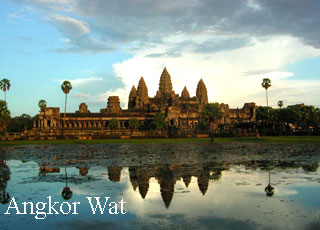 There are few places anywhere on earth to match the splendour of Angkor Wat. The temple is one of the largest monuments to religion ever built and is truly one the wonders of the world. Believed to have been constructed as a temple and mausoleum for King Suryavarman II at the peak of the Khmer empire in the first half of the 12th century, Angkor Wat is probably the best-preserved of the Angkorean temples. As with other Angkorean temples and walled cities such as Angkor Thom, the central theme of Khmer architecture revolved around the idea of the temple-mountain.
There are few places anywhere on earth to match the splendour of Angkor Wat. The temple is one of the largest monuments to religion ever built and is truly one the wonders of the world. Believed to have been constructed as a temple and mausoleum for King Suryavarman II at the peak of the Khmer empire in the first half of the 12th century, Angkor Wat is probably the best-preserved of the Angkorean temples. As with other Angkorean temples and walled cities such as Angkor Thom, the central theme of Khmer architecture revolved around the idea of the temple-mountain.
By the time building on Angkor Wat was begun early in the 12th century, this had been elaborated to a central tower surrounded by four smaller towers. The central monument represents the mythical Mount Meru, the holy mountain at the centre of the universe, which was home to the Hindu god Vishnu. The five towers symbolise Mount Meru's five peaks. It is difficult to express in words the enormous scale of Angkor Wat, but it can be explained in part by a look at the dimensions of the complex. The temple is surrounded by a moat which makes the one around the Tower of London, built at roughly the same time, look like nothing more than a garden trench.
At 190 metres wide and forming a rectangle measuring 1.5 km by 1.3 km, it is hard to imagine any attacking force overwhelming the defences. But the moat was more than just a defensive bulwark, in line with the temple's Hindu origins it represented the oceans of the world. A rectangular wall measuring 1025 metres by 800 metres borders the inner edge of the moat. There is a gate in each side of the wall, but unusually for the mainly Hindu-influenced Angkorian temples, the main entrance faces west. This entrance is a richly decorated portico, 235 m wide with three gates. However, the temple's greatest sculptural treasure is its 2 km-long bas-reliefs around the walls of the outer gallery and the hundred figures of devatas and apsaras. This intricately carved gallery tells stories of the god Vishnu and of Suryavarman II's successes on the battlefield. The whole complex covers 81 hectares
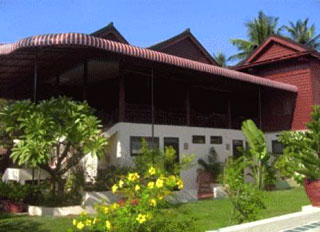 There is no shortage of restaurants in Siem Reap. They have been opening steadily over the past couple of years. Siem Reap offers an excellent variety of restaurants. Shinta Mani and Hotel Grand D'Angkor lead the fine dining category though there are several places offering excellent cuisine in a stylish, refined atmosphere. There are also plenty of moderately priced Cambodian and international restaurants. Almost every restaurant offers Cambodian food. For the budget minded, check out the inexpensive Chinese places at the south end of Sivatha Blvd. or the local food stalls and noodle cookshops next to Phsar Char (Old Market).
There is no shortage of restaurants in Siem Reap. They have been opening steadily over the past couple of years. Siem Reap offers an excellent variety of restaurants. Shinta Mani and Hotel Grand D'Angkor lead the fine dining category though there are several places offering excellent cuisine in a stylish, refined atmosphere. There are also plenty of moderately priced Cambodian and international restaurants. Almost every restaurant offers Cambodian food. For the budget minded, check out the inexpensive Chinese places at the south end of Sivatha Blvd. or the local food stalls and noodle cookshops next to Phsar Char (Old Market).
Attending a traditional dance performance is a must when visiting Cambodia. Several restaurants offer dinner performances. Nightly performances: Grand Hotel D?Angkor, Apsara Theater, Kulen II, Angkor Mondial, Chao Pra Ya, Tonle Mekong, and Tonle Sap. Some restaurants, such as the Dead Fish Tower, offer traditional music during the dinner hour. Shadow puppetry can be seen at Bayon 1 and La Noria Hotel.
A traditional dance performance at one of the dinner theatres is a perfect place to begin the evening. If you're looking for something a bit more conventional, there are a variety of places from which to choose. The piano bar at Grand D'Angkor, and the live traditional music at Dead Fish Tower make for pleasant venues to begin the evening. Buddha Lounge, Ivy Bar, The Red Piano, Temple Bar, Linga Bar, Molly Malone's, Angkor What and not to forget the bars of the Pub Street where you can find popular early evening pubs, drawing tourists and expats alike, and getting more crowded as the evening progresses. Pub Street in the Old Market area is the happening place to be in the evening these days offering several bars and restaurants, not only on Pub Street, but on nearby streets and allies. Things get going in the late afternoon and some places stay open quite late.
 Siem Reap has an ever-growing number of HOTEL AND guesthouse rooms, and a variety that is wide enough to satisfy all tastes and requirements. Though staying right in the middle of town is a bit more convenient to the Old Market and Sivatha road area, the town is relatively small making any location almost equally convenient as any other.
Siem Reap has an ever-growing number of HOTEL AND guesthouse rooms, and a variety that is wide enough to satisfy all tastes and requirements. Though staying right in the middle of town is a bit more convenient to the Old Market and Sivatha road area, the town is relatively small making any location almost equally convenient as any other.
There are now several four and five-star hotels in town, especially along the airport road. Less expensive mid-range rooms with a/c, cable TV, and hot water are available in a variety of styles and look and begin at about $15 or $20 but average $25 - $60. More expensive usually means newer, more stylish rooms, and more hotel services. Budget guesthouses, usually family-run, cost $2-$10 a night. Dozens of budget places are scattered across town, with a concentration in the Wat Bo and Taphul Village areas. Almost all guesthouses and hotels can arrange anything a tourist might need including tours, transport and information.
For more information or booking, please visit: www.cambodiaangkortravel.com
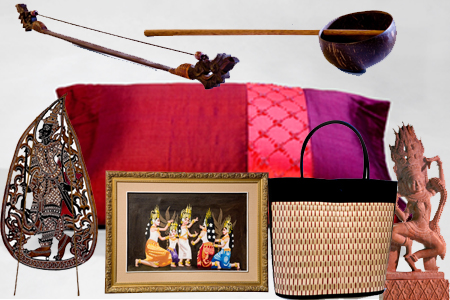 Siem Reap is an excellent place to buy Cambodian souvenirs, handicrafts, textiles and art. Only Phnom Penh offers a comparable selection, but much of what is available in Siem Reap is unique to Siem Reap. Until recently, the Old Market (Phsar Chas) and vendors at the temples were the only places to buy souvenirs. Over the last few of years there has been a small boom of new shops, galleries and boutiques, offering a more varied selection of quality handicrafts and silks as well as original artistic creations - paintings, prints, carvings and such.
Siem Reap is an excellent place to buy Cambodian souvenirs, handicrafts, textiles and art. Only Phnom Penh offers a comparable selection, but much of what is available in Siem Reap is unique to Siem Reap. Until recently, the Old Market (Phsar Chas) and vendors at the temples were the only places to buy souvenirs. Over the last few of years there has been a small boom of new shops, galleries and boutiques, offering a more varied selection of quality handicrafts and silks as well as original artistic creations - paintings, prints, carvings and such.
The Old Market still has the widest variety of souvenirs, as well as the best selection of items such as baskets, silver work and musical instruments. It also offers an interesting local ambiance, but the boutiques, galleries and specialty shops offer generally higher quality items and a more sophisticated selection of Cambodian products. Of particular interest are the traditional craft workshops and silk farms where you can see crafts in the making as well as buy the final product.
When purchasing local crafts, be selective in your purchase as there might also be some fakes. Most of the crafts, particularly the carvings, silk products and silverwork are hand-made, making each piece a unique work. Masters as well as students produce much of what is available, so some pieces are significantly better than others.


